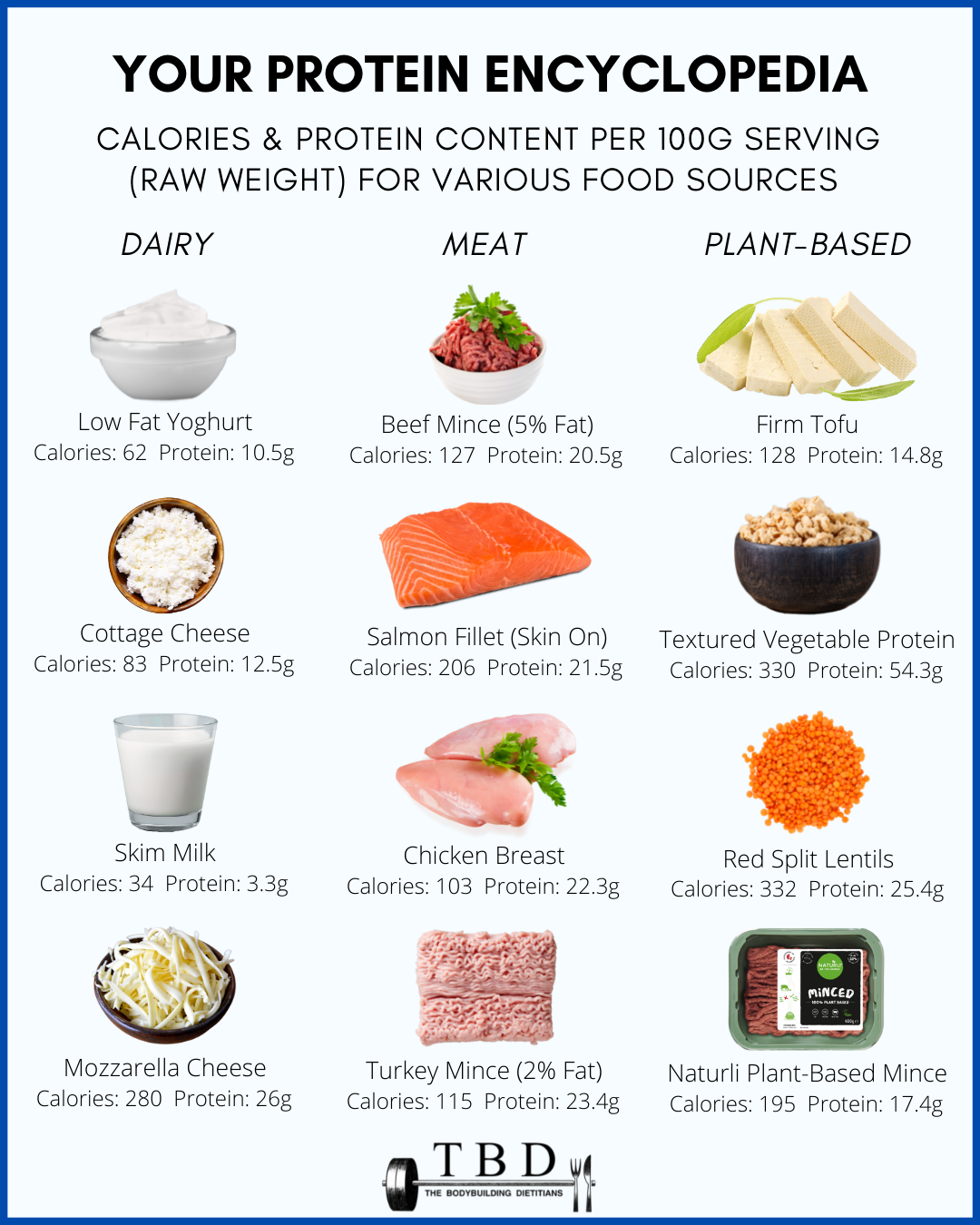It’s not uncommon for some people to struggle to consistently hit their daily protein targets. While protein shakes and bars are convenient, it’s most certainly achievable to hit your protein goals through predominately whole food sources! All it takes is:
1.) Understanding which food sources are protein-rich
2.) Knowing how much protein you need to eat each day
2.) Having a plan in place
Daily protein recommendations are between 1.6-2.2g/kg/day, and for the sake of easy math we recommend to simply multiply your bodyweight in kilograms by two and aim for this as a daily target. After you’ve done this simple calculation, divide your target number by 3-5 depending on how many times you would like to eat per day. Then, once you have a protein goal for each meal time, identify how much protein-rich food that equates to in terms of grams and… commit to eating it!
Another note to make is that different protein-rich food sources don’t only provide protein, but they also provide a unique panel of micronutrients and/or other macronutrients. For example, dairy products will provide a significant amount of calcium, red meat contains a significant amount of iron, and oily seafood can provide omega 3 fatty acids. Therefore, rather than exclusively just having chicken or tofu at each main meal, we encourage you to aim to have a different protein source at each meal to stay well nourished!
*Take note that wholegrains, vegetables, nuts, seeds, fruit and the like all contain trace amounts of protein and will also contribute to your daily protein intake. However, to meet a protein target of 2g/kg while staying within a caloric energy budget, it’s generally most viable to ensure you include a protein-rich source of food at each meal rather than only relying on trace sources.
